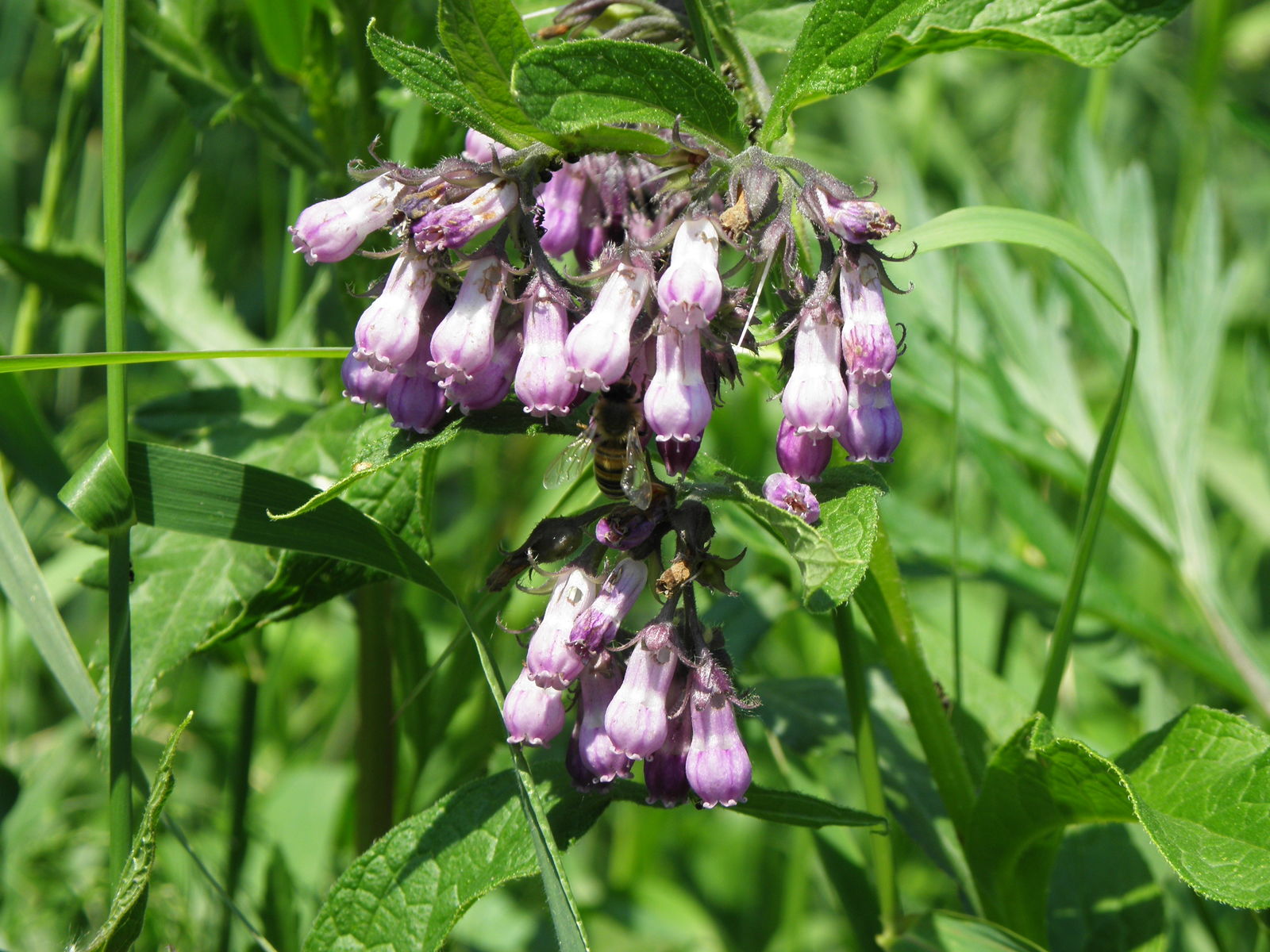
#SYMPHYTUM OFFICINALE PLANT FULL#
Plant prefers full sun and regular garden soil. Traditional usage (TWM): used externally to speed healing. True Comfrey is the original herb as detailed in all the ancient literature. Warning: Seek medical attention if ingested. ( 3 customer reviews) 8.50 57.00 Family: Borage (Boraginacea) Hardy in Zones 4 to 8 Herbaceous perennial native to Europe.
#SYMPHYTUM OFFICINALE PLANT SKIN#
The stiff hairs on the leaves and stems can cause skin irritation. endangered and threatened species, and for 18 of U.S. According to the U.S Forest Service, Invasive species have contributed to the decline of 42 of U.S. It produces clusters of purple, blue, and white flowers, and it’s famous for its long.


Repeat exposure may lead to liver failure. Symphytum officinale: Family: Boraginaceae: Plant Type: Herbaceous, perennial: Mature Size: 12-36 in. Symphytum officinale (Common Comfrey) is listed in the Invasive Plant Atlas of the United States. (comfrey, Boraginaceae) is a cultivated or spontaneously growing medicinal plant that is traditionally used for the treatment of bone fractures, hematomas. Comfrey is a shrub that grows in parts of Europe, Asia, and North America. Ingestion may cause delayed liver damage. Symptoms: All parts of the plant are poisonous. The leaf base is tapered into the stem giving a winged appearance.įruit/Berries: The fruit is a shiny, smooth black nut to 6mm. Leaves: Leaves are covered with stiff hairs, oval to lance-shaped, arising from a basal rosette, decreasing in size towards the top of the plant larger leaves to 25cm long. Symphytum species, also known as comfrey, belong to the Boraginaceae family and include around 35 species, including Symphytum officinale L., Symphytum tuberosum L., Symphytum x uplandicum Nyman, Symphytum asperum Lepech and Symphytum caucasicum Bieb 1,2. New York Metropolitan Flora Project, Brooklyn Botanic Garden, New York. Cultivated for culinary or medicinal use.įlowers: Flowers are mauve, purple or creamy yellow, bell-shaped and in clusters along one side of the flower stem, often drooping downwards. A synonymized checklist of the plants found growing in Rhode Island. Harvest new leaves when they are required.General description: A coarse, vigorous, clumping, tuberous perennial herb covered with stiff hairs growing to 90cm tall and up to 50cm wide. Grow Comfrey on its own, as it spreads easily and can become invasive. It also multiple other medicinal uses.Ĭomfrey can be grown as an ornamental plant. Keep an eye out for excessive growth, as it can become invasive.Ĭomfrey is also known as knit-bone, a reference to its capacity to aid in the healing of bones. Las hojas son grandes, muy ásperas, con la nerviación marcada y con la base decurrente sobre el tallo. Características: Hierba robusta, hirsuta, con tallos erectos y un corto rizoma. Plant comfrey near vegetable garden, it acts as a natural soil tonic and most plants will benefit from it. Mulleres de montaña, turberas, lagos de montaña.

Habitus, Germany Habitus, Poland Habitus, Poland Poland in Akureyri in Iceland. (Source: KewGarden WCSP) Tropicos link: Symphytum officinale L. Use the fresh leaves to line holes and trenches for food crops before planting. The Plant List link: Symphytum officinale L. It is high in calcium, potassium and nitrogen content, which makes it a great natural fertiliser. The leaves help break down compost very quickly. Wound healing activity of comfrey was determined by qualitative and quantitative histological analysis of open wound in rat model, using allantoin as positive control. It contains chemicals toxic to the liver and should not be used internally. (comfrey) incorporated in three pharmaceutical formulations. Like common comfrey (Symphytum officinale) it is traditionally used externally as a poultice to help heal wounds and reduce joint inflammation. It can be grown as an ornamental plant, or used for medicinal purposes, as a tea or even as a vegetable (cut the young leaves and prepare like spinach).Ĭomfrey can be used in the compost heap. Abstract The present work evaluates wound healing activity of leaves extracts of Symphytum officinale L. Plant Comfrey on its own, as it spreads easily and can become invasive. Species information Category Wildflowers Statistics Height: up to 1m Conservation status Common. Sometimes considered a 'weed', this hairy plant can be used as an organic fertiliser and a form of slug control. It is a wonderful first aid herb to have on hand in case you or someone you know twists their ankle.

The plant bears bell-shaped, purple, pale yellow or white flowers.Ī perennial member of the borage family, with large, hairy leaves. Scientific name: Symphytum officinale The drooping, tubular, pink flowers of Common comfrey are a familiar sight to many gardeners. The plant is also excellent to use topically on sprains, pulled muscles, swellings and fractures.


 0 kommentar(er)
0 kommentar(er)
